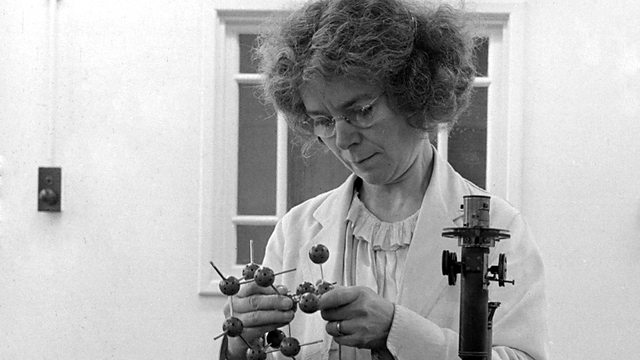The achievements of women in science have, historically, been often played down or even ignored (for example only 13% of London’s blue plaque locations commemorate women). That is something that can definitely be said of pioneering crystallographer Dame Kathleen Lonsdale.
Born in Ireland on the 28th January 1903, Kathleen Yardley and her family moved to Essex in 1908 due to the continuing political unrest. She excelled at school and was admitted to the Bedford College for Women, part of the University of London, to study Mathematics at the age of just 16 but, after a year, she chose to switch to Physics. After finishing top of her class, she came to the attention of Nobel Prize winner William Henry Bragg, who invited her to join his research team at University College London, and it was here that she began her research into X-ray crystallography. When Bragg left University College for the Royal Institution, Kathleen followed.
After marrying Thomas Lonsdale in 1927, Kathleen and her husband moved to Leeds where she joined the Physics department at the University of Leeds. It is here, in 1929, that she made an important discovery; after receiving a grant to build her own crystallography apparatus she used it to analyse the structure of the hydrocarbon hexamethylbenzene, and she found that a ring of benzene is flat and hexagonal, a result significant for both X-ray crystallography and for organic chemistry. After this Kathleen went on to make numerous other discoveries, from the magnetic response of crystals to how to analyse the structure of bladder stones, and published in excess of 200 research papers.
Alongside her research Kathleen was a devoted mother to three children, a determined pacifist and Quaker. Her pacifism and strong moral beliefs would land her in prison during World War Two when she refused to register for civil defence, and then refused to pay the fine imposed on her for doing so. She served one month in Holloway Prison, an experience that affected her deeply and lead to an active involvement in prison reform and would continue her stand against war by becoming a member then Vice-President of the Atomic Scientists Association and President of the Women’s International League for Peace and Freedom in the UK.
Kathleen achieved a lot of firsts in her career: she was one of the first two women elected a Fellow of the Royal Society (the other was Marjory Stephenson), the first woman tenured professor at University College London, the first woman president of the International Union of Crystallography and the first woman president of the British Association for the Advancement of Science. She was made Dame Commander of the Order of the British Empire in 1956, awarded an Honorary Degree from the University of Bath in 1969 and has three university buildings and a crystalline diamond structure (Lonsdaleite) named after her. And yet she remains largely unknown by people outside of her field.
Allison Vale, author of A Woman Lived Here: Alternative Blue Plaques, Remembering London’s Remarkable Women, explains that the reason why there are so many forgotten pioneering women, particularly in science, is because the recording of history has predominantly been carried out “by men, about men, for men.” And because historically, unlike their male comrades, women have often had to take somewhat unorthodox routes to achieve their success. Routes, Vale says in her recent Telegraph article, which might span a wide array of fields, which meant that these women “left a different kind of paper trail – one which was messier for early modern historians to document.”
So that leaves it to us, and the Vales and the Anna Kessel’s (creator of the Blue Plaque Rebellion) of this world, to bring to light the achievements of such incredible women and make sure they are recognised and remembered.

